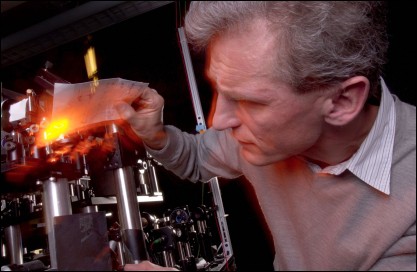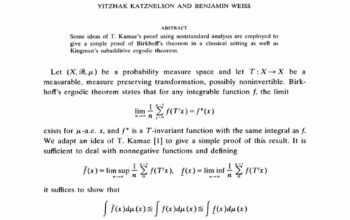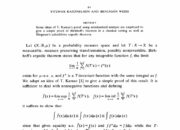The intricate dance of particles within the universe often evokes vivid metaphors, illustrating the fundamental behavior of matter at the quantum level. A striking embodiment of this concept is the behavior of fermions, particularly in contexts devoid of conventional fluidity. The phenomenon of fermions pairing without inducing superfluidity presents a fascinating avenue for exploration, providing insights into the multifaceted nature of quantum mechanics and the intricate fabric of condensed matter physics.
To comprehend the intricacies of fermionic behavior, one must first appreciate the intrinsic properties that distinguish fermions from their bosonic counterparts. Fermions, characterized by half-integer spin, adhere to the Pauli exclusion principle, which prohibits identical fermions from occupying the same quantum state concurrently. This tenet governs a plethora of phenomena ranging from atomic structure to the behavior of electrons in solids. The interplay between fermionic statistics and their accompanying interactions engenders a rich tapestry of physical behaviors, wherein the very nature of their pairing can yield non-classical states of matter.
One might liken the pairing of fermions to the coupling of dancers in a complex choreography, wherein each partner must navigate the constraints of their environment while simultaneously synchronizing their movements. In many systems, these pairs exhibit superfluidity, manifesting as a collective flow devoid of viscosity. This beguiling state is characterized by a coherent wave function that permits frictionless motion. However, the absence of superfluidity in certain pairing arrangements challenges our preconceived notions of fermionic behavior, denoting a phenomenon termed as “Bound but Not Fluid.”
The fascinating interplay arises when considering systems such as ultracold Fermi gases subjected to powerful tuneable interactions. Under particular conditions, these gases can form tightly bound pairs known as Cooper pairs, a notion that finds its roots in Bardeen-Cooper-Schrieffer (BCS) theory. In this framework, the attraction between fermions, mediated by lattice vibrations or phonons, leads to the formation of these pairs even at conditions where one would expect superfluidity to emerge. Yet, in certain states, the resultant coherence is inadequate to elicit superfluid behavior, thereby cultivating a state of matter distinctively defined by its bound nature. This landscape challenges one’s intuition and compels a reevaluation of conventional categorizations within condensed matter physics.
The nuanced differentiation of bound fermionic pairs can be illustrated through the examination of exotic phases such as the p-wave and d-wave superconductors. These exotic pairing mechanisms, while fundamentally fermionic, depict drastically varied macroscopic phenomena depending on the symmetry of the wave function governing the pairs. The p-wave pairing, which allows for chiral structures, exhibits notable resilience against disorder, while d-wave pairs exhibit nodes, where the superconducting gap vanishes. In this context, the phenomenon wherein fermions manifest binding without transitioning into a superfluid state accentuates the intricacies of quantum statistics, revealing layers of complexity that elude classical interpretations.
Moreover, an exploration of the relevant interactions highlights the delicate balance between attractive and repulsive forces at play. Consider, for instance, systems in which long-range correlations foster binding but hinder the dissemination of coherent phase information necessary for superfluidity. Here, one encounters an intricate arena where fermionic pairs encapsulate potential non-classical behaviors yet remain hamstrung by environmental constraints, akin to dancers who yearn for graceful motion but are confined within a smaller stage.
This phenomenon has profound implications extending into realms such as quantum computing and quantum simulation. The ability to harness and understand these unique bound states without fluidity may pave the way for novel quantum materials and technologies with enhanced functionalities. For instance, topological insulators, characterized by their edge states arising from their fermionic content, demonstrate properties reliant on the non-trivial nature of particle interactions. By delving deeper into the mechanics of fermionic pairings, researchers may uncover mechanisms that allow for enhanced control over quantum states, leading to advances in data protection and information processing.
As one traverses this intricate landscape of fermionic behavior, it becomes evident that the interplay of interactions delineates the boundary between disparate states of matter. The historical quest to elucidate the characteristics of fermionic pairings without superfluidity resonates with fundamental questions regarding the nature of quantum coherence, symmetry breaking, and the emergent phenomena that arise when particles engage in complex ballet.
In conclusion, the realm of fermions encapsulates a rich narrative that transcends the simplistic paradigms of classical physics. The phenomenon of bound but non-fluid fermions underscores the myriad possibilities engendered by quantum mechanics. It invites scholars to embrace the complexity of interactions and to acknowledge the vast unknowns that persist within the quantum domain. This intriguing exploration serves as a reminder of the elegance and sophistication governing the microscopic world, wherein fermions, while confined within their intricate relationships, produce a captivating tableau of behaviors profoundly resonant within the heart of physics.












